Being a story planner is not necessarily vital for success. Some writers swear by seeing where a loose, less structured writing process takes them. Yet this may take longer, and there are other risks to having no story scaffolding. Learn how to organize your novel using methods such as online story planners and tools, annotation and story planner templates:
Should you use a story planner tool?
Opinion is divided on whether or not you should plan a story in detail.
NY Book Editors, for example, published a piece titled ‘Planning to outline your novel? Don’t’ (though some of the arguments are questionable, as the comments raised).
Crime fiction author Sophie Hannah, on the other hand, suggests that being a methodical story planner saves you time later:
If you get the planning and plan-editing process right, you should only have to write one complete draft of your novel. Of course, there will be edits later on, but you might not have to do a complete second draft that feels almost like starting from scratch. A lot of the thriller-writers I know who turn up their noses at planning end up writing four or five drafts of their novel before they’re happy with it. You might want to do that – in which case, you should do it! – but if you’d like to spend one year writing a book rather than five, planning is the way forward.
Sophie Hannah, ‘How and Why I Plan My Novels’, via author’s website.
Whether you use a story planning tool such as Now Novel’s dashboard or Scrivener depends on your needs (many of our members have said they use both, each for their own features and strengths).
Do you need a creative and flexible system? A way to define your characters in advance so you can picture them clearer as you draft scenes? An outline that guides you through your rough draft? (These are some of the benefits Now Novel users have attributed to our own story planner.)
Then there is nothing wrong with using methods and tools that support your story’s focus.
How to organize your novel to become a stronger story planner:
- Start with a clear story scenario
- Brainstorm the five W’s
- Outline a skeleton cast of characters
- Note story beats typical for your genre
- Keep an organized series of scene ideas (plus any you scrap)
- Write a one-sentence, one-paragraph, and one-page synopsis
- Try a short story version to see
- Annotate your draft as you go
- Put planning into process (if you’re a pantser)
Let’s discuss story planning in more detail:
1. Start with a clear story scenario
Knowing broadly what (and who, and where) your story is about already narrows down your scope in a useful way.
Crime writer Sophie Hannah describes starting with an elevator pitch:
[I start with a] one-or-two-line elevator pitch: that is, how I would describe the driving narrative force in the book to someone who knew nothing about it.
Hannah, ‘How I Plan My Novels’
Often when aspiring authors send us their central idea for feedback, there are many brilliant ideas. Yet there is so much happening at once in a single paragraph the story’s scope seems almost infinite.
Ideally, your story scenario is concise, so that it communicates the core ‘what if…?’ or driving force behind your story, as Hannah says.
For example, the scenario for Romeo & Juliet you could write as:
Romeo and Juliet, who belong to the rival, feuding Montague and Capulet families, fall in love and are torn between familial duty and their mutual passion, leading to tragedy.
In the above story scenario example, there’s a clear sense of who the main characters are, where supporting characters and conflicts may appear (R and J’s mutual households), as well as the general arc of the story (towards a tragic end).
A clear scenario is useful as it is much easier to organize your story around a simplified, succinct idea. This makes it easier to evaluate scene and chapter ideas against how they connect to (and develop) your fundamental material.
Start with a Comprehensive Story Planner
Brainstorm a strong story scenario and develop character profiles, scene ideas and more in easy steps.
START
2. Brainstorm the Five W’s
We often write about ‘The Five W’s’. Who, what, why, where, and when.
This quintet of story elements is common to novels and other story formats and journalism alike.
Asking questions about the Five W’s will help you begin to organize and plan ideas such as characters’ motivations and goals (‘why’). Or the time and place in which your story unfolds (where and when).
For this process, you could start to organize your novel using a simple story planner template such as this:
Ask these questions about your story overall, as well as individual scenes.
Alternatively, use Now Novel’s story planner dashboard which generates a detailed PDF outline of your story as you work through easy prompts. It’s like a template, yet broader and more flexible and expansive.
3. Outline a skeleton cast of characters
How much you plan and outline your story in advance versus how much you discover in the drafting process depends on what you prefer.
If knowing each character’s every goal, desire, flaw, fear, tic and quirk feels stifling, you may want to profile ‘ID card’ character outline basics. Key details such as:
- Name
- Age
- Place of birth
- Marital status
- Vocation
Useful elements to start with, however, include goals, motivations and conflict. What your characters want, why they want it, and how their desires could meet obstacles along the way.
Characters you may want to profile to organize ideas for your novel include:
- Main character(s) or protagonist(s)
- Secondary characters such as buddies, rivals, familiar acquaintances (e.g. a local shopkeeper or merchant who will play a significant or comic relief role)
Many authors start with one or two profiles, then pause to profile more characters as new cast additions appear in the course of drafting.
Novel planning tools make this process easier. If outlining characters in word documents instead, you could make a folder for each character’s summaries and other bits of research that are character-specific. Otherwise a tool like our dashboard helps you organise everything in one, bumper document.
4. Note story beats typical for your genre
Sophie Hannah’s article referenced above touches on an important aspect of deciding to outline or use a story planner: Genre.
Now you could argue it is worthwhile planning in any genre. However, in genre fiction such as crime there are common story beats such as crime scene investigation that make a particularly good argument for organizing in advance.
If you’re writing a detective novel, for example, where a murder mystery must be solved in the course of the book, you naturally will need specific beats, such as your detective questioning (or observing) suspects and persons of interest.
In a post for Angela Ackerman and Becca Puglisi’s ‘Writers Helping Writers’, paranormal romance writer Jami Gold gives four examples of major story beats you can use to organize your story’s narrative structure:
Examples of story beats to include in your story planner
1) Main conflict’s starting point
An event or situation that gives your main character a reason to get involved in the story’s central scenario.
For example, Luke Skywalker meeting Obi-Wan in Star Wars: Episode IV – A New Hope and being invited to accompany his future mentor to the planet Alderaan.
2) The mid-point
Approximately halfway through your story, this is a story beat that either changes your protagonist’s goals or adds new stakes to their main, overarching ones.
For example, in the middle of Austen’s Pride and Prejudice, Darcy sends Lizzie Bennett a letter explaining his cold-seeming gestures and reframing her impression of him.
3) The bleak moment
Gold calls this the ‘black moment’. This typically occurs around 75% through the story, and it is when the hope for a solution or resolution dims. In a ‘boy meets girl’ (or gender non-binary meets non-binary) romance story, this be the ‘character loses other’ opposite point of the ‘meet cute’ moment.
4) Climax and resolution
Typically the last quarter or less of a story, this is where conflicts come to a head. In an epic fantasy, it may be a final showdown with an antagonist. In a murder mystery, the solving of the final clue leading to conclusive identification of a killer.
Brainstorming and organizing your ideas around just these 4 beats already begins to give your story structure and direction, plus that vital ingredient of an engaging story: Change.
5. Keep an organized series of scene ideas (plus any you scrap)
We’ve written before about ways to organize story scenes and scene ideas.
Creating scene summaries in a corkboard, on physical index cards, or a drag-and-drop tool like our Scene Builder (limited to paid Now Novel memberships) is extremely helpful for organizing your ideas. You can take scenes out and see how the new timeline this creates scans, for example.
In our own Scene Builder, we’ve implemented tagging this year so that you can tag scenes with words or phrases and view all your outlined scenes that have a specific tag, hiding others:
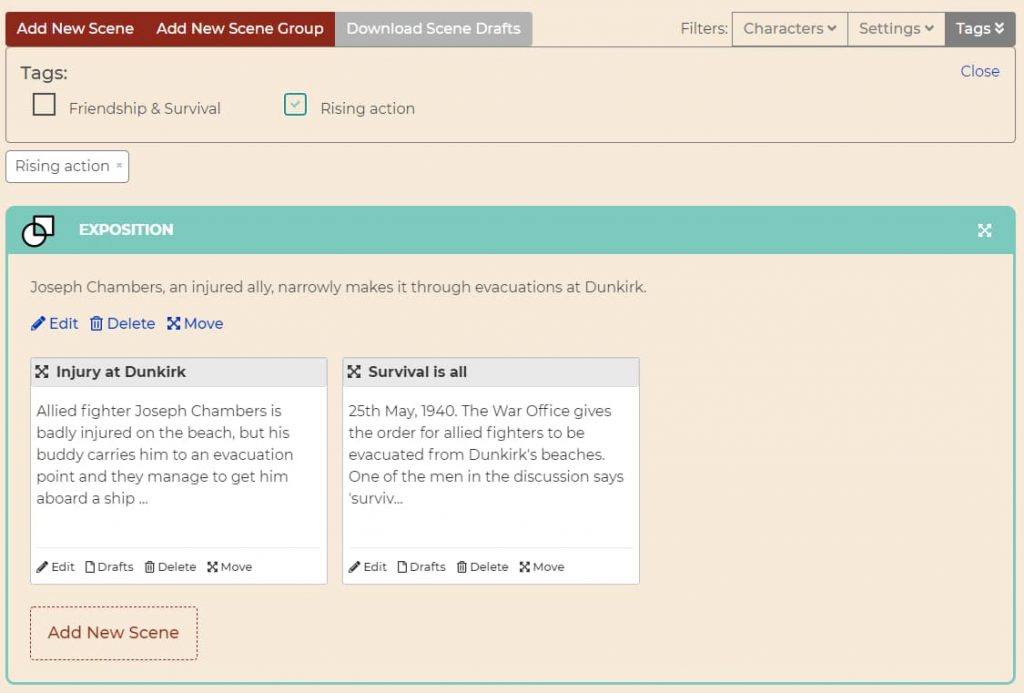
This unlocks boundless ways to restructure and compare story beats and plot points as you proceed.
If you do not have funds to purchase a paid story planner tool or app, use a free tool like Google Sheets.
This might not be as feature-rich or tailored to planning stories specifically. Yet you could use one column for scene summaries, and another column with checkboxes for ‘written’, ‘to write’ or ‘to edit’ to keep tabs of where you are in your process, or with information such as what part of the story or beat the scene completes.
One important caveat to planning, whether you use a story planner or spreadsheets: Set yourself a limit to stop planning and start writing, as Now Novel coach Romy Sommer shared in her webinar on writing series:
6. Write a one-sentence, one-paragraph, and one-page synopsis
This is an incredibly useful exercise to try, even if you are not a story planner by nature.
We’ve baked this process into the ‘Summary’ section of our own story dashboard, for good reason. It helps you find your story’s focal elements: Core conflicts, turning points, character introduction junctures and more.
We could do this as an exercise for Romeo & Juliet:
Example: Planning a story by expanding summaries
One-sentence blurb example:
Two lovers from rival, feuding families must choose between duty and romance with deadly consequences.
One-paragraph summary example:
In Verona, Italy, Romeo of the house of Montague meets Juliet of the house of Capulet at a ball, unaware that she is a member of a rival family. Juliet’s cousin Tybalt is enraged Romeo has snuck into the ball. Later, Romeo sneaks into the Capulets’ orchard to see Juliet in secret. After swearing their love for each other they’re married in secret the next day. Tybalt challenges Romeo to a duel, but Romeo refuses, his friend Mercutio fighting in his place. Mercutio is killed. Grief-stricken, Romeo attacks and kills Tybalt. As a result, the prince of Verona exiles Romeo, while Juliet’s parents pressure her to marry a handsome, vain count. She goes to the friar who married her and Romeo in secret for advice, and he convinces her to stage her own death. Romeo is meant to learn of the plan but doesn’t and, finding Juliet seemingly dead, kills himself. When Juliet wakes up from her staged coma, finding Romeo dead, she kills herself, too.
A one-page synopsis would go into even more subplot detail (such as Romeo killing Paris in the Capulet’s crypt where he finds Juliet).
The above process is helpful because it helps you organize your story ideas, such as the key conflicts that may arise and their possible outcomes and consequences.
7. Try a short story version to see
Investing lots of time in a story planner to develop a full outline of a novel plus writing a draft takes time.
One way to test your story idea, and see where it could go, is to write a short story version on the same idea.
James Joyce’s Modernist classic A Portrait of the Artist as a Young Man allegedly started life as a more condensed draft called ‘Stephen Hero’.
In a roundup where the Australian Writers’ Centre asked 20 authors how they plan stories, author Graeme Simsion shared a similar approach:
In the case of Adam Sharp I wrote a short story, as a precursor. I think it’s a great way of working up a character. So, I had a bit of a sense of what I wanted to do there. But then I went back, I got the entire plot sorted out and then started again.
Australian Writers’ Centre team, ‘Should I Plan my Novel? 20 Authors Tell us How they Get it Done’, June 2020.
Even if you’re a pantser by nature, this may be a more time-saving way of expanding core character and plot ideas into a more substantial story.
8. Annotate your draft as you go
One thing I have learned as a fiction editor is the immense, time-saving utility of annotating.
When evaluating manuscripts and writing readers’ reports, for example, I use a short-hand in Microsoft Word comments so that I can search through my commentary on specific characters and their arcs or plot points later.
For example, I might write an observation such as, ‘Char: Stephen: His use of quite prejudiced, pejorative language in this scene seems inconsistent with his description as ‘tolerant’ on page 3. Check character consistency or illustrate how his character has changed (if it has) so the reader understands this apparent contradiction.’
When I search ‘Char: Stephen’ in Word, I then have a list of every observation, aside, contradiction or unresolved question for this specific character.
This makes it so much easier to move between the detailed view (of a draft) and a summary (such as the summarial feedback I might make pinpointing examples of Stephen’s occasional inconsistency.
Annotating your draft with shorthand will help you organize your thoughts around further edits (and you can choose ‘resolve all comments’ to create a ‘clean’, comment-free version quickly).
9. Put planning into process (if you’re a pantser)
If you’re allergic to planning and absolutely refuse to use a story planner app, you aren’t alone. Many authors (even ‘Type A’, list-making fusspots) prefer to ‘wing it’.
If you’re not planning your story itself, you may still find comforting structure and organization in planning your process around writing. Join a regular writing sprint. Keep chart of daily or weekly word count targets you can check off your list.
Checking in with yourself like this is a good way to stay motivated to write and consciously recognize each milestone you reach as you make progress.
What do you need to do for your story planning process to feel a success? Comment your planning process.
Yet to start? Brainstorm your story’s central idea and get going.

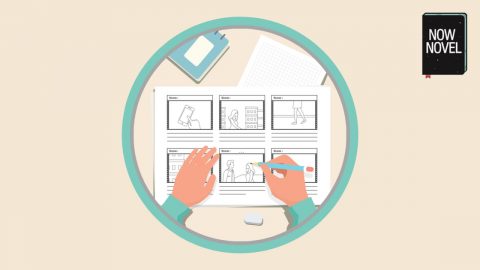
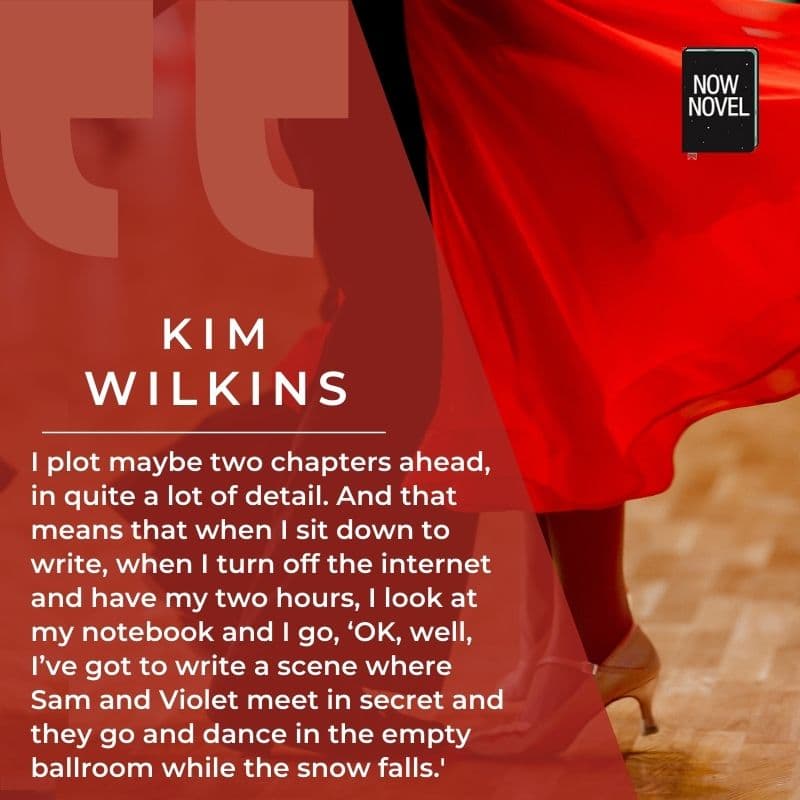
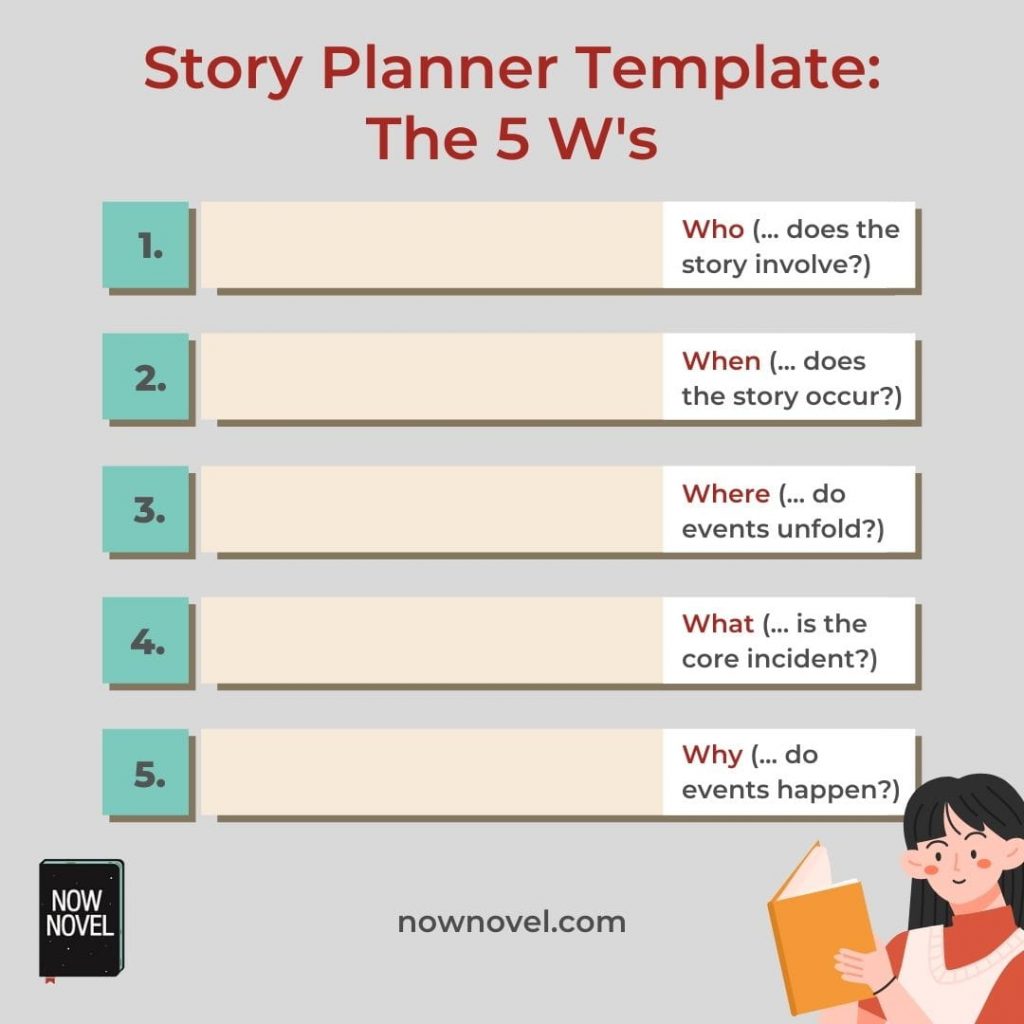
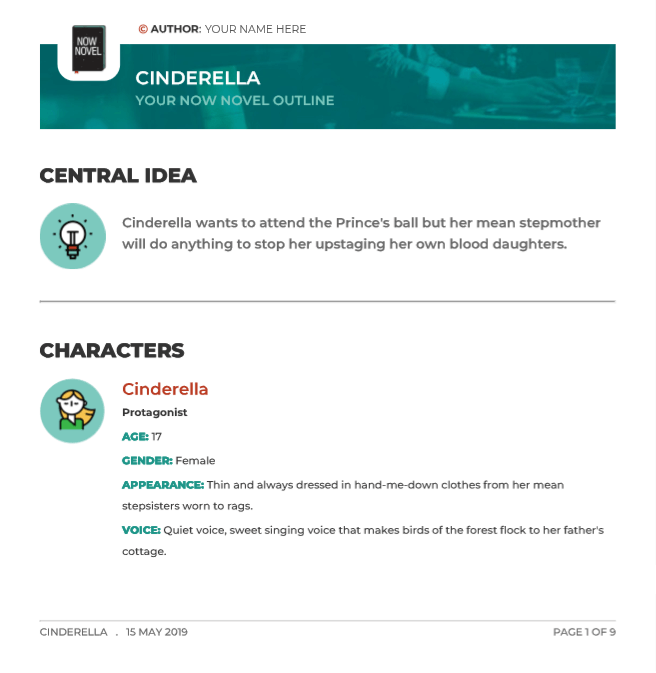
14 replies on “Story planner success: How to organize your novel”
I prefer to plan out my books in advance; however, I do it without story planning tools. I simply envision what I want to do on a regular basis ahead of time. Depending on my next book, I may write an outline for it before I begin writing it.
Hi Todd, thanks for sharing your method. If that works for you, that’s the main thing. All success for your next book!
Planning things out works best for me, as well. When I started my first novel (and only novel so far) I literally drew it out on a giant piece of butcher paper like a graphic organizer. Throughout the writing process, when I feel lost, I go back and roll that big piece of butcher paper out on the kitchen counter and see where I am. I have also found that planning an informal outline for each chapter is also helpful to keep me moving forward. This is in my spiral-bound notebook, with pencil. Either plan can change, of course, and certainly does, but that outline sure does help me keep moving forward. Another very useful post. Thanks.
Thank you for sharing your process, Billy. There’s something about the simple physicality of writing by hand that I also find grounding. It doesn’t help that my handwriting is a dog’s breakfast, though 🙂 I’m glad you’ve found a set of connected outlining processes that help you keep moving forward.
Hi Jordan,
I’m a short story writer. Still, I enjoyed reading and learning from the article. When I came to point number 7 ‘Try a short story version’, I was thrilled. That means this is useful for writing 10–20-page short stories too.
Thanks a lot.
Hi Rajesh, thank you for your kind feedback. I’m glad you enjoyed this article. Absolutely, you can use our story brainstorming and planning tools for all kinds of fiction writing.
I am just starting my first book and I’m glad I came here first! This makes perfect sense to me. Thank you for this useful article.
Hi Katy, thank you for your kind feedback. I’m glad you’ve found this article useful for starting your first book. Good luck with it and have fun!
I found this blog very informative, Keep up the good work.
I’m glad to hear you found our blog informative, thank you for reading and sharing feedback.
Great advices. I feel sometimes it’s good to just go with the flow, but usually it’s better to work in systematic, organised way.
Hi Piotr, this is such a personal thing. Some people really thrive when they have a structured plan in place. Even if you prefer not to do this, I find even a brief outline is helpful when writing a longer work. Thanks for writing!
Excellent advice! I once tried to write a book without planning first and it didn’t work out. It was fun, but not very productive.
Thanks for the article!
Dear Laura, thanks so much for writing in. Glad you found it useful. Yes planning is very useful, and can save you tons of time when writing a novel. As the blog post has it, why spend five years writing a novel, when you could spend just a year? All the best with future writing (and planning!)